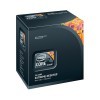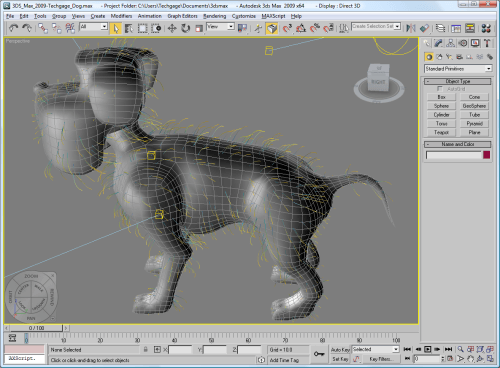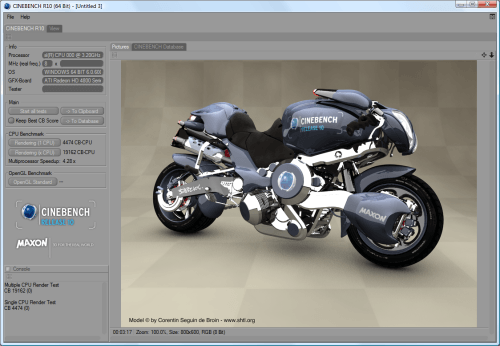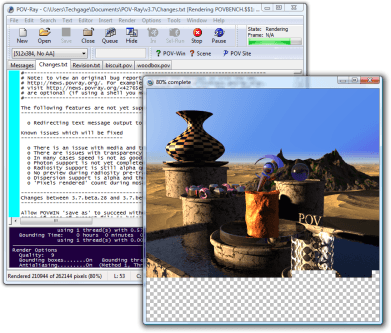- Qualcomm Launches Snapdragon 4 Gen 2 Mobile Platform
- AMD Launches Ryzen PRO 7000 Series Mobile & Desktop Platform
- Intel Launches Sleek Single-Slot Arc Pro A60 Workstation Graphics Card
- NVIDIA Announces Latest Ada Lovelace Additions: GeForce RTX 4060 Ti & RTX 4060
- Maxon Redshift With AMD Radeon GPU Rendering Support Now Available
Intel’s Core i7-980X Extreme Edition – Ready for Sick Scores?

It’s official. We’re now entering the six-core realm, thanks to Intel’s Gulftown. The first model, Core i7-980X, is more than capable of delivering the sick scores that our title suggests, and along with it, we can begin to see some major benefits of the 32nm process. To sweeten the deal further, Intel even includes an effective new CPU cooler.
Page 5 – Workstation: Autodesk 3ds Max, Cinebench, POV-Ray
Autodesk’s 3ds Max is without question an industry standard when it comes to 3D modeling and animation, with DreamWorks, BioWare and Blizzard Entertainment being a few of its notable users. It’s a multi-threaded application that’s designed to be right at home on multi-core and multi-processor workstations or render farms, so it easily tasks even the biggest system we can currently throw at it.
For our testing, we use two project files that are designed to last long enough to find any weakness in our setup and also allows us to find a result that’s easily comparable between both motherboards and processors. The first project is a dog model included on recent 3ds Max DVD’s, which we infused with some Techgage flavor.
Our second project is a Bathroom scene that makes heavy use of ray tracing. Like the dog model, this one is also included with the application’s sample files DVD. The dog is rendered at an 1100×825 resolution, while the Bathroom is rendered as 1080p (1920×1080).

I don’t think the result seen here will come as any surprise. 3D rendering applications tend to have the best multi-threaded goals in mind, and that’s evidenced here with very nice gains over the quad-core i7-975 in both of our render jobs.
Cinebench R10
Like 3DS Max, Cinema 4D is another popular cross-platform 3D graphics application that’s used by new users and experts alike. Its creators, Maxon, are well aware that their users are interested in huge computers to speed up rendering times, which is one reason why they released Cinebench to the public.
Cinebench R10 is based on the Cinema 4D engine and the test consists of rendering a high-resolution model of a motorcycle and gives a score at the end. Like most other 3D applications on the market, Cinebench will take advantage of as many cores as you can throw at it.

I’m willing to bet that the latest version of Cinebench has improved multi-threading capabilities, but even so, the results seen here on the i7-980X are quite good. The scaling is excellent, and we see just about a 40% increase in our multi-threaded test. Naturally, the single-thread test is on par with the Core i7-975.
POV-Ray 3.7
Similar to Cinebench, the “Persistence of Vision Ray Tracer” is as you’d expect, a ray tracing application that also happens to be cross-platform. It allows you to take your environment and models and apply a ray tracing algorithm, based on a script you either write yourself or borrow from others. It’s a free application and has become a standard in the ray tracing community and some of the results that can be seen are completely mind-blowing.
The official version of POV-Ray is 3.6, but the 3.7 beta unlocks the ability to take full advantage of a multi-core processor, which is why we use it in our testing. Applying ray tracing algorithms can be extremely system intensive, so this is one area where multi-core processors will be of true benefit.
For our test, we run the built-in benchmark, which delivers a simple score (Pixels-Per-Second) the the end. The higher, the better. If one score is twice another, it does literally mean it rendered twice as fast.

Intel’s ray tracing performance truly shines here, with what amounts to more than a 50% increase between the i7-980X and i7-975. It should be noted, though, that part of the reason for this could be the fact that we’ve updated our version of POV-Ray since the i7-975 was benchmarked, so that might be attributed to the more than 50% increase. Due to how POV-Ray is developed, a certain version will cease to operate after a certain date, so an upgrade is mandatory. That’s not a bad thing for those who want to use the tool for actual ray tracing work, but it makes things difficult for benchmarking.
Support our efforts! With ad revenue at an all-time low for written websites, we're relying more than ever on reader support to help us continue putting so much effort into this type of content. You can support us by becoming a Patron, or by using our Amazon shopping affiliate links listed through our articles. Thanks for your support!








